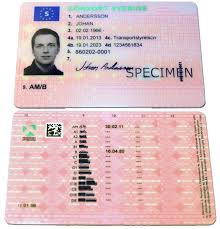10 Things We All We Hate About Road Crossing Photo Traffic Authority
페이지 정보

본문
 Road Crossing Photo Traffic Authority
Road Crossing Photo Traffic Authority Road crossing photo traffic authority is an effective tool that neighborhoods can release at crossways in high-risk areas to improve safety for everyone. To utilize photo enforcement, an intersection must have a stop line or crosswalk and be located in a highway work zone, school crossing zone or high-risk crossway segment.
Road crossing photo traffic authority is an effective tool that neighborhoods can release at crossways in high-risk areas to improve safety for everyone. To utilize photo enforcement, an intersection must have a stop line or crosswalk and be located in a highway work zone, school crossing zone or high-risk crossway segment.Pedestrians
A pedestrian's best place to cross a road is at a significant crossing or intersection. In addition, the Governor's Highway Safety Association reports that pedestrians are most often killed by drivers who are turning left or crossing the road in the evening. The association recommends pedestrians avoid walking on roadways with rush hour.
Pedestrians should constantly wear bright visible clothes when out walking on streets, walkways or shared courses (areas designated for pedestrian and bike usage). They need to also look both methods before stepping onto the road and make sure vehicles have stopped before they cross. If you're utilizing a wheelchair or movement scooter, ensure the wheels are locked to prevent it from rolling into the street.
When strolling on a road, pedestrians should remain as near to the sidewalk as possible to allow simple access to stores and structures. When there's no walkway, walk on the best side dealing with traffic to guarantee cars and trucks can see you. If you're strolling in front of a shop, raise your hand when you enter and leave to alert drivers to your existence.
Even when using a significant crosswalk or trafikverket norrköping förnya körkort trafikverket körkort förnya (check out this blog post via opensourcebridge.science) crossway, you must still look both ways before crossing the street. Drivers may be distracted, especially if they're using a phone or listening to music. Also, a lorry's turn signal might be flashing, however if the driver hasn't inspected to see whether there are any pedestrians in his lane or on the other side of the street, he can accidentally turn into them and hit them.
Some roadways threaten for pedestrians, including arterial roadways that link city centers to highways and expressways. These paths have many lanes and a range of speeds, making it tough for drivers to expect pedestrians. Also, larger lorries such as buses, trucks and SUVs obstruct pedestrians' view of the road.
Pedestrians should never ever walk on limited-access roadways or their entrance or exit ramps, and they must be really careful when strolling around a roundabout. Pedestrians can safely cross roundabouts by utilizing one of the splitter islands between the 2 different instructions of traffic. If you're not sure of how to safely cross, ask the local authorities department for advice. FHWA is working to enhance pedestrian crossings through STEP Studio, trafikverket norrköping Förnya Körkort a tool kit that provides a range of countermeasures for specific locations and conditions.
Pedestrian Signals
Pedestrian signals different pedestrians from traffic and control their crossing of busy crossways. The signals are activated by a pedestrian pushing a button that positions a call into the signal controller. The signal controller then cycles through the phasing series to reach the appropriate phase for the pedestrians' requirements.
Generally, the very first time the pedestrian signal cycled through its series, it would display the WALK or walking individual symbol and remain on for a minimum of four to seven seconds. During this time, pedestrians are enabled to leave the curb and start their crossing. The WALK indicator need to be stable and visible to all pedestrians, consisting of those with vision problems.
In addition, the signal may consist of a countdown timer that shows the number of seconds staying in the flashing DON'T WALK interval for finishing the crossing. Some blind and aesthetically impaired individuals feel that this info is unneeded because it can disrupt their capability to hear approaching cars.
The signal might likewise be set up for unique pedestrian phasing, which permits pedestrians to cross only when there is no or very little vehicle traffic. This is beneficial to some pedestrians who have movement or cognitive disabilities. Exclusive pedestrian phasing is only possible at particular times of the day and night, though, and can only be carried out in specific locations.
Some pedestrian signals are synchronized with the car traffic signal system to offer coordinated operations. Pedestrians need to be careful of this due to the fact that there is the potential for a confused signal and an unsafe scenario that might cause an unrestrained crossing.
To be safe, a pedestrian must constantly listen to the APS and traffic, particularly initial parallel automobile movements, to make certain that their directional walk indication (On Your Mark!) and/or speech walking person signal connects to the traffic situation. It is likewise an excellent idea to find the place of the tactile arrow on the APS and verify that it is pointing in the instructions of the designated destination street. This will help the pedestrian to enter into position and align with the ADA-required flat face on the pushbutton, and to maintain alignment throughout their crossing.
Traffic Control Devices
Traffic control devices help keep the flow of traffic moving at intersections and other key places. They consist of signal lights, electronic message boards, traffic signs and barriers. In addition, they can consist of warnings and guidance indications that assistance drivers remain safe. For example, a warning indication may alert drivers of upcoming pedestrian crossings or construction zones, helping to prevent high-speed accidents.
A signal light is a necessary tool for managing the circulation of traffic at intersections, where vehicles originate from different instructions and need to be merged. They utilize green, yellow and traffic signals to assist drivers and pedestrians. They can likewise include flashing lights or Trafikverket öRebro FöRnya KöRkort a bell to alert pedestrians of the presence of incoming automobiles.
Advanced technology is making traffic control gadgets more efficient, with wise systems that adjust in genuine time based upon road conditions. These systems lower congestion and improve safety by allowing pedestrians to cross the road before traffic resumes.
These systems utilize sensing units to find pedestrians and trigger the traffic signals at the proper time. They are designed to provide top priority to pedestrians, emergency and public transport automobiles. They are often found at airport runways and other hectic crossways.
For example, in Perth, Australia, a device called the "Keywalk" permits disabled individuals to extend the walk stage of a traffic light. This system was developed in action to concerns of disability advocates who desired disabled people to be able to cross the highway securely.
While these devices are not as obvious as traffic control, they are simply as essential to road safety. Without them, drivers and pedestrians might get hurt by erratic driving or other hazards.
The Manual on Uniform Traffic Control Devices (MUTCD) supplies the standards utilized by road supervisors nationwide to install and keep traffic control devices. It is updated routinely to reflect brand-new advancements in the field. Keeping up with the MUTCD can be difficult, however it is crucial to the success of traffic management. The MUTCD News Feed offers Interim Approvals, Official Interpretations, Policy Statements and Federal Register notifications for road managers. It can be accessed online, and trafiksäkerhetsverket köRkort it can be signed up for so that you get updates immediately.
- 이전글10 Misconceptions Your Boss Has About Pragmatic 25.02.21
- 다음글What's The Job Market For Automatic Hoover Professionals Like? 25.02.21
댓글목록
등록된 댓글이 없습니다.